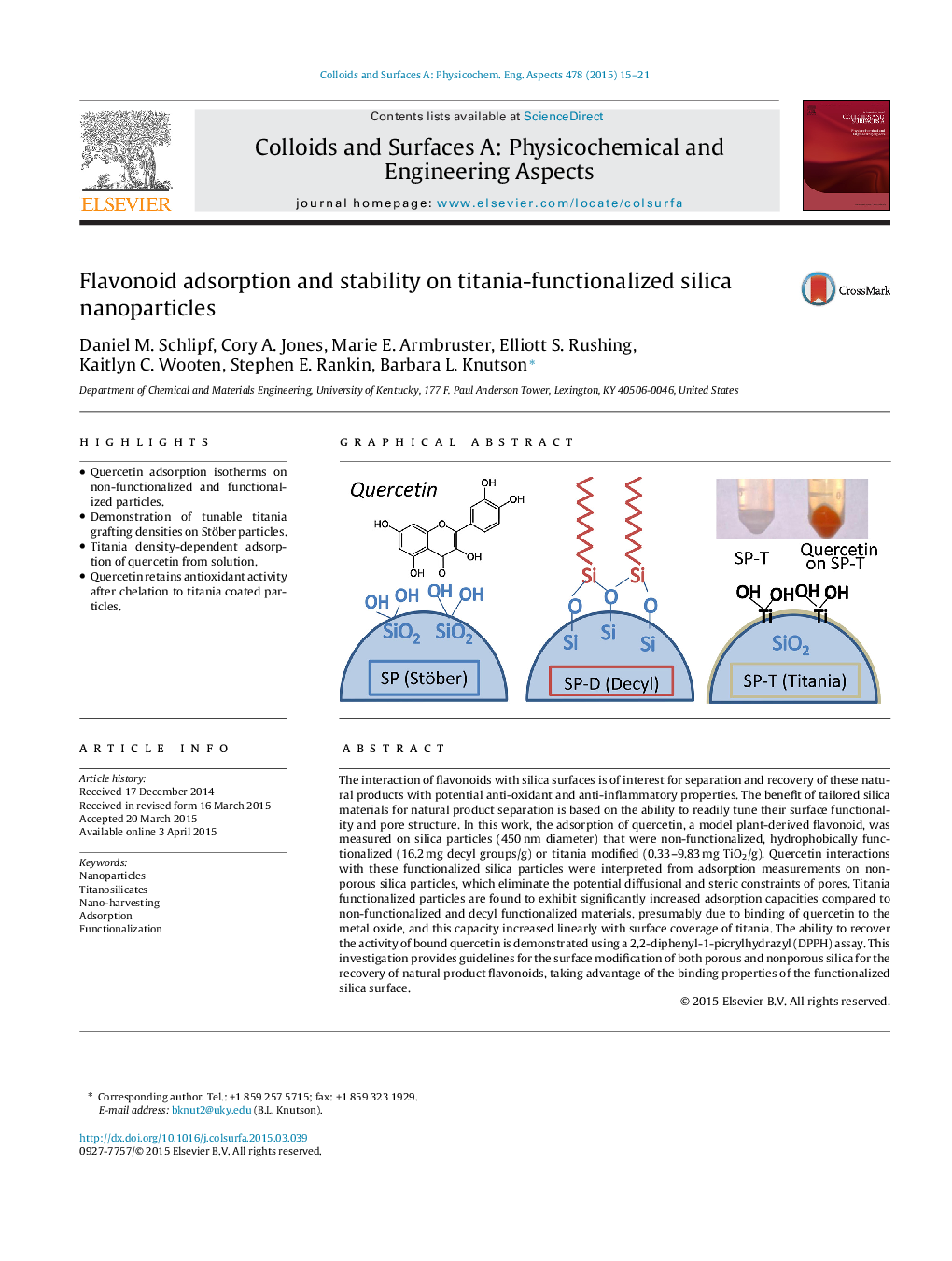| Article ID | Journal | Published Year | Pages | File Type |
|---|---|---|---|---|
| 592212 | Colloids and Surfaces A: Physicochemical and Engineering Aspects | 2015 | 7 Pages |
•Quercetin adsorption isotherms on non-functionalized and functionalized particles.•Demonstration of tunable titania grafting densities on Stöber particles.•Titania density-dependent adsorption of quercetin from solution.•Quercetin retains antioxidant activity after chelation to titania coated particles.
The interaction of flavonoids with silica surfaces is of interest for separation and recovery of these natural products with potential anti-oxidant and anti-inflammatory properties. The benefit of tailored silica materials for natural product separation is based on the ability to readily tune their surface functionality and pore structure. In this work, the adsorption of quercetin, a model plant-derived flavonoid, was measured on silica particles (450 nm diameter) that were non-functionalized, hydrophobically functionalized (16.2 mg decyl groups/g) or titania modified (0.33–9.83 mg TiO2/g). Quercetin interactions with these functionalized silica particles were interpreted from adsorption measurements on non-porous silica particles, which eliminate the potential diffusional and steric constraints of pores. Titania functionalized particles are found to exhibit significantly increased adsorption capacities compared to non-functionalized and decyl functionalized materials, presumably due to binding of quercetin to the metal oxide, and this capacity increased linearly with surface coverage of titania. The ability to recover the activity of bound quercetin is demonstrated using a 2,2-diphenyl-1-picrylhydrazyl (DPPH) assay. This investigation provides guidelines for the surface modification of both porous and nonporous silica for the recovery of natural product flavonoids, taking advantage of the binding properties of the functionalized silica surface.
Graphical abstractFigure optionsDownload full-size imageDownload as PowerPoint slide
